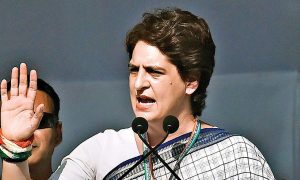Public provident fund (PPF) is a popular long-term investment option available to individuals in India. It is highly suitable for investors with lower risk appetite and allows for systematic saving for the long term as it has a minimum lock-in for 15 years. PPF attracts investors because of the triple tax benefits offered by the scheme. The contribution, interest earned as well as the returns are all tax exempt.
Read More: 7th Pay Commission: DA Hike For Madhya Pradesh Govt Employees Likely To Be Announced After New Year
Hike in Small Savings Investment Limit
However the investment limit has not been hiked by the government for several years. In contrast, the government announced to increase investment limit of other savings scheme options including – Senior Citizen Savings Scheme (SCSS), Post Office Monthly Income Scheme (POMIS) and Sukanya Samriddhi Account Scheme. The interest rate for the same has also been note hiked since April 2020 which remains fixed at 7.1 per cent to date.
Budget Expectations
Answering this, Shikha Bhatia, Associate Professor – Finance and Accounting, International Management Institute (IMI),New Delhi, said “The challenge is that the investment limit is Rs 1.5 lakhs per annum and has not been increased for many years. For the past few years, the taxpayers are demanding an increase in the limit of PPF to at least Rs. 3 lakhs per annum.”
“The revision in the PPF limit will help investors save more which is needed in the face of ever-increasing inflation. Many professional bodies like ICAI have also advocated for a limit increase. An increased PPF limit would increase the domestic savings rate and boost investment,” added Shikha Bhatia.
In India, the government does not support individuals in post-retirement age through pensions or social security programs.
In the absence of a government-supported social security system, the onus for saving for post-retirement life, children’s education, housing, healthcare needs, etc. falls on the individuals themselves.
A big savings corpus also becomes essential to meet contingencies like COVID-19, healthcare emergencies, loss of income, etc. So, individuals need to consciously save adequately while they earn.
Shikha noted, that “for the magic of compounding to happen, they need to save for the long term. So, in the interest of the public at large, the government must increase the PPF investment limit. It must also plan interventions to equip individuals better to achieve financial wellness on their own. It is highly likely that in the upcoming budget, the government will consider the genuine demand of professionals and hike the PPF limit.”
What is EEE in Income Tax?
Consider that you plan to invest a certain amount in an investment scheme for saving your tax, so here at the first step your investment is exempted from tax and your part of salary that you invested in the scheme will not be taxable and your investment qualifies for a deduction.
Your second benefit comes when you earn interest over your invested amount. The entire interest that is accumulated over the investment phase is tax-exempted.
Read More: How Much Monthly Interest Will You Earn For Rs 1 Lakh FD Across Different Tenors? Check Calculator
The third and final exempt under the EEE category means that the entire income generated including your accumulated interest, principal amount will not be taxable at the time of withdrawal of maturity. This is called EEE – Exempt Exempt Exempt category that is tax exemptions on investment, interest / return and maturity.





































